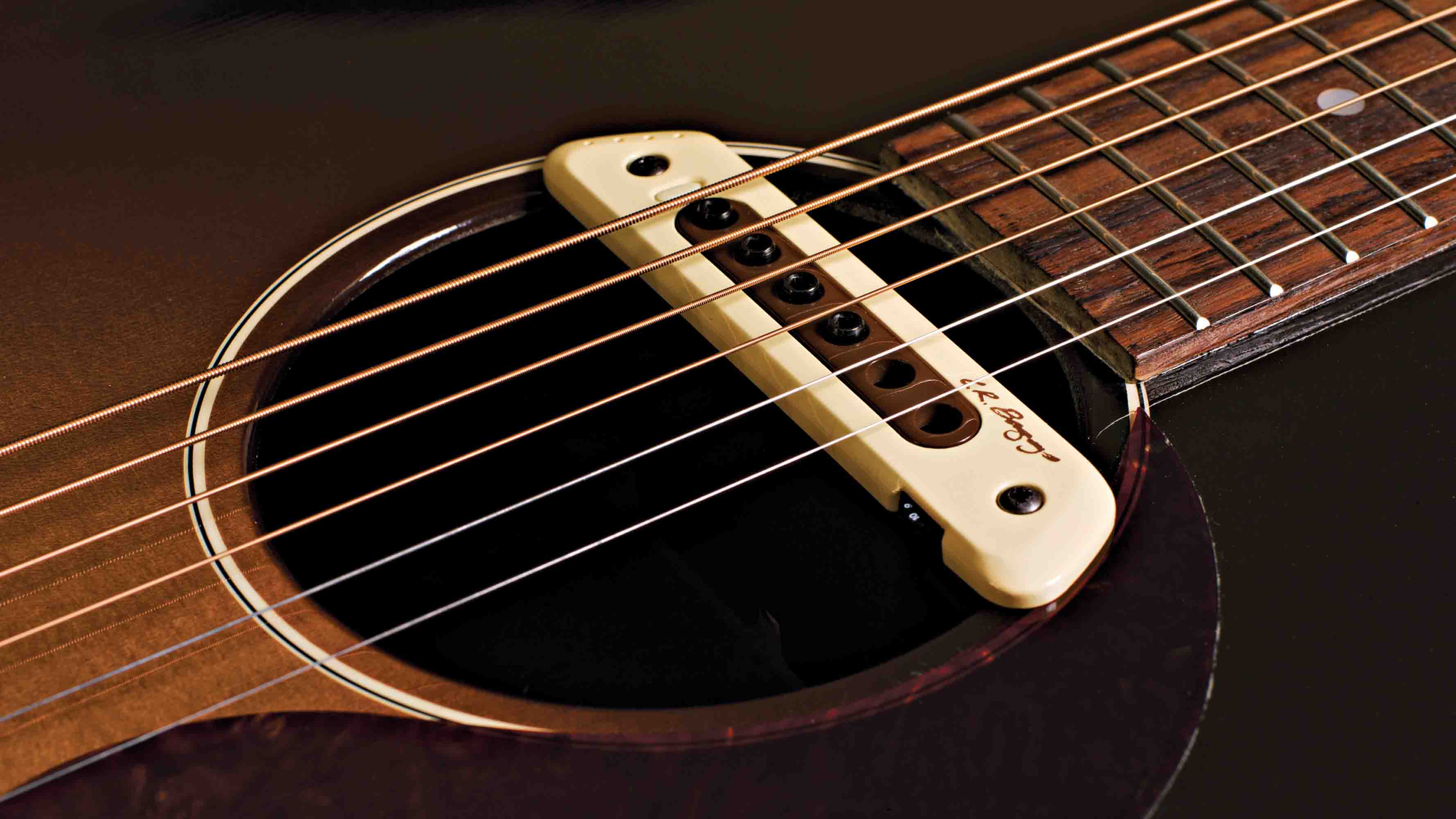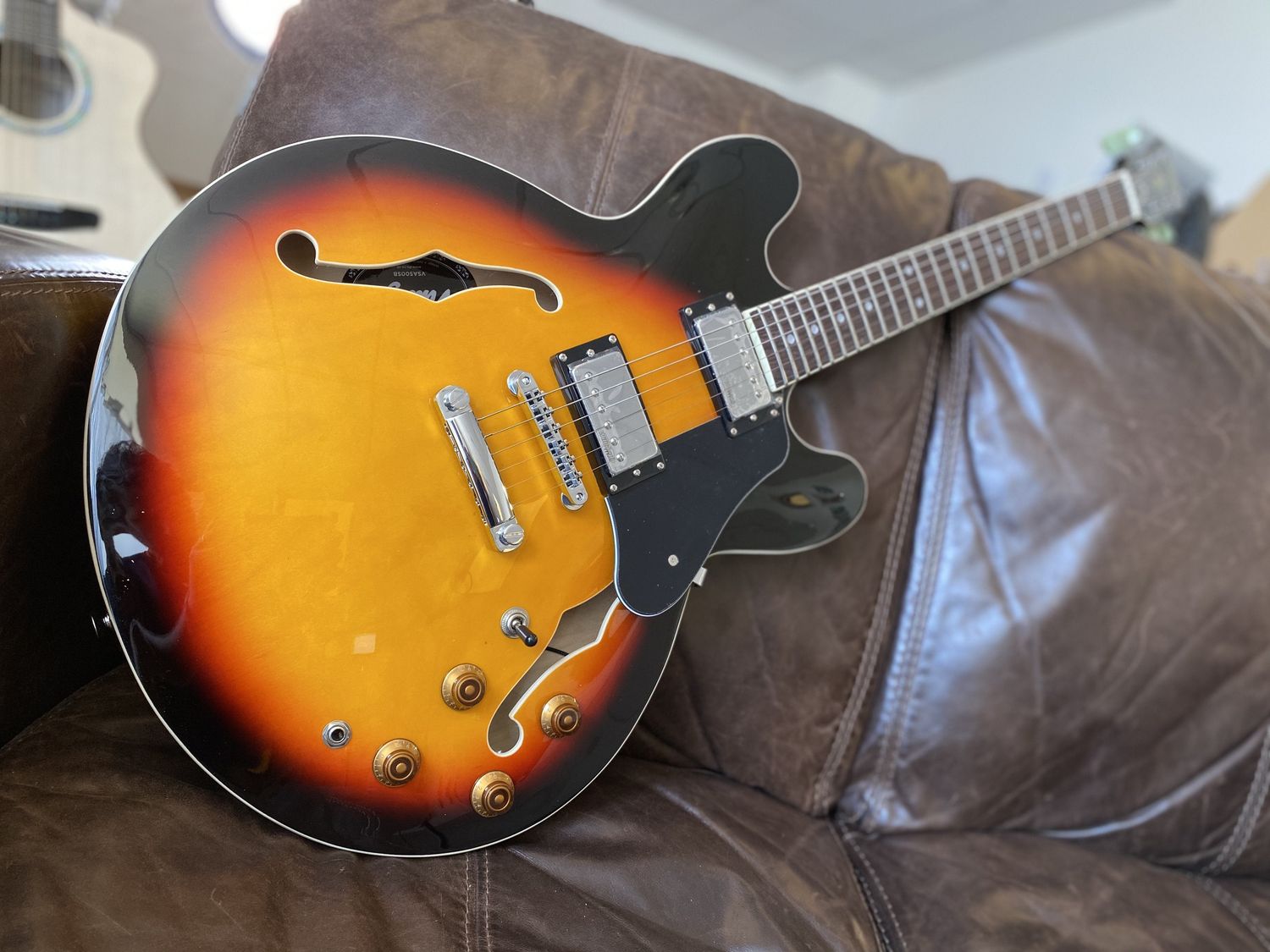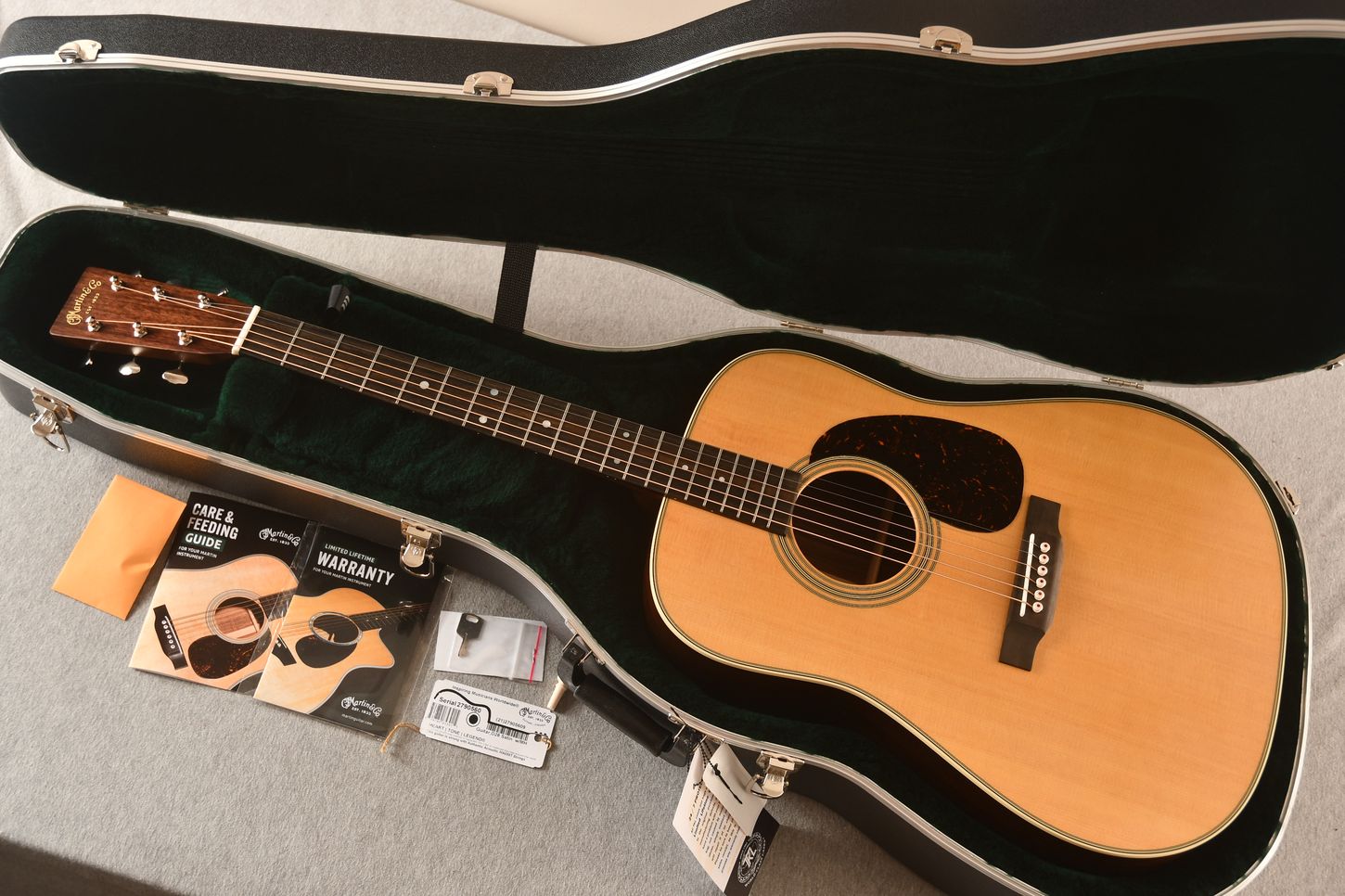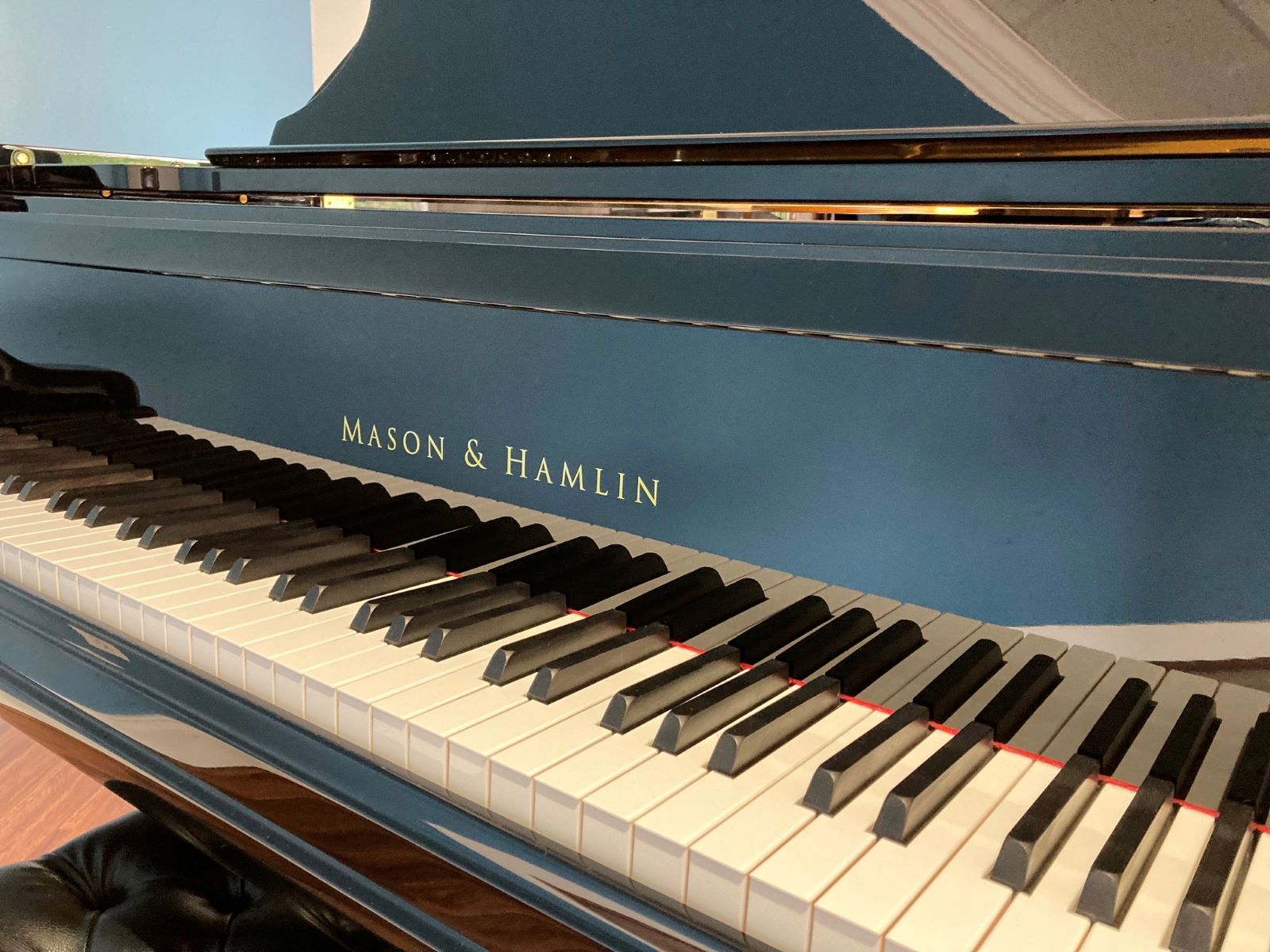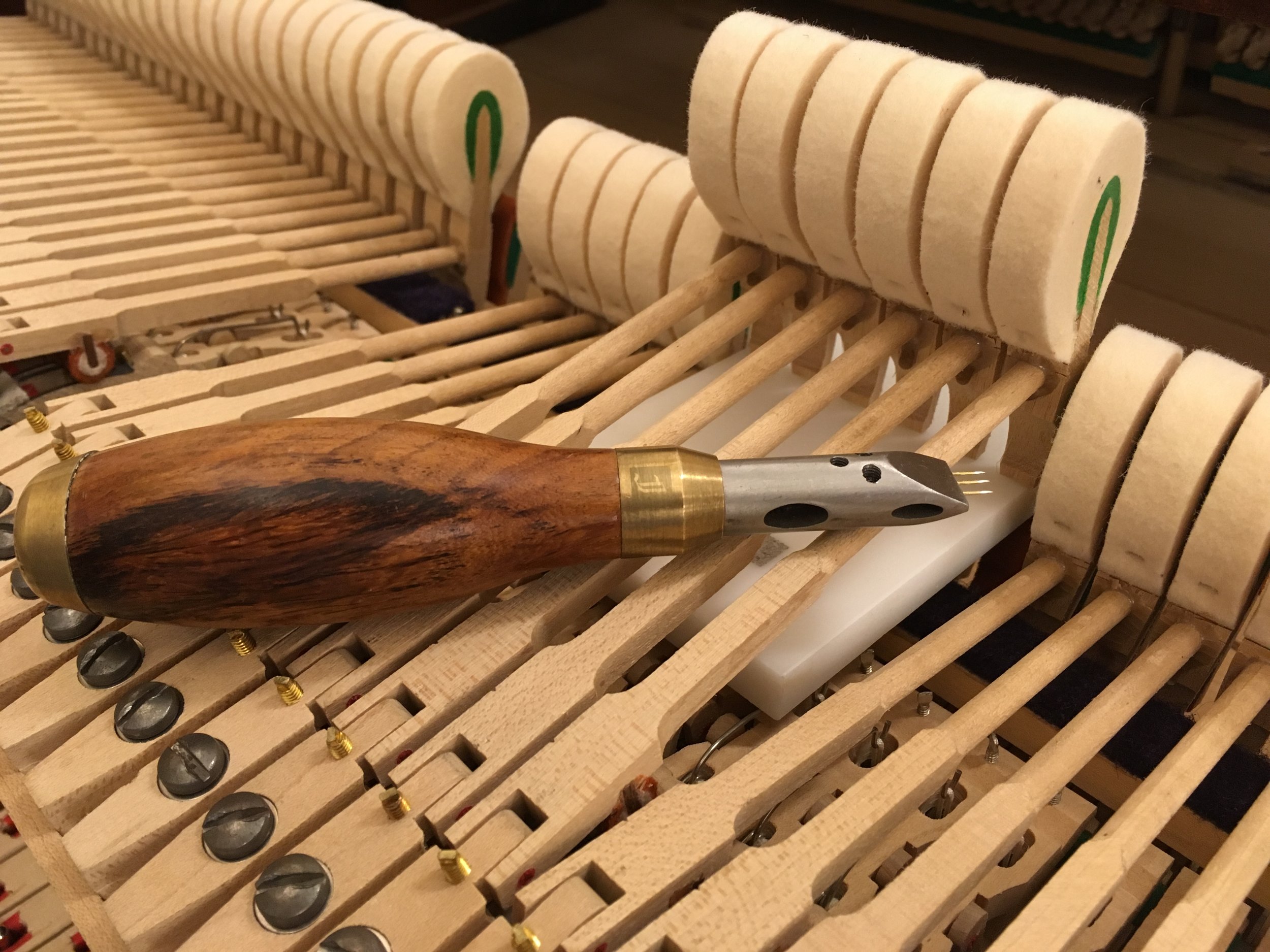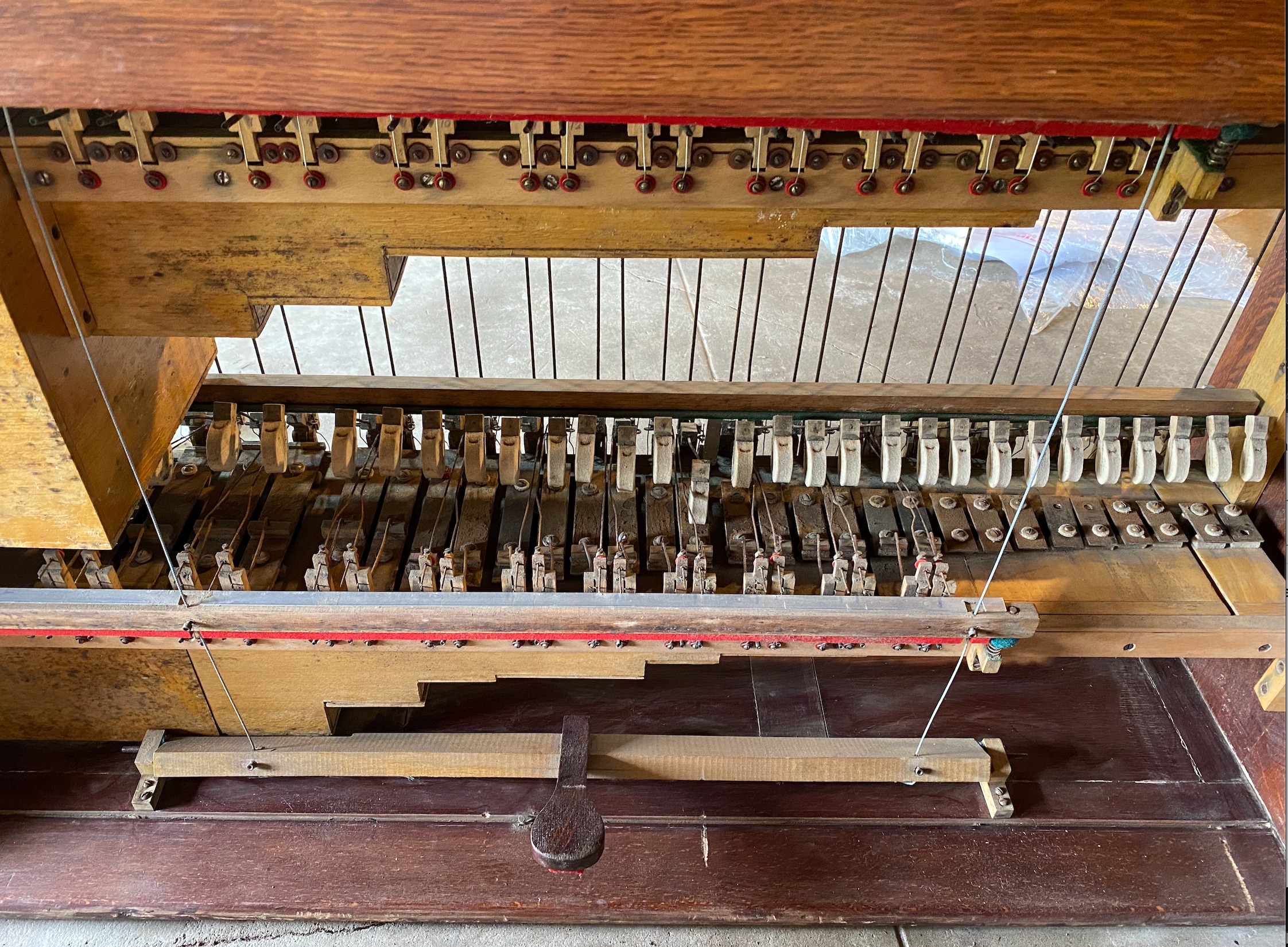Home>Instruments>Piano>What Is An Acoustic Piano
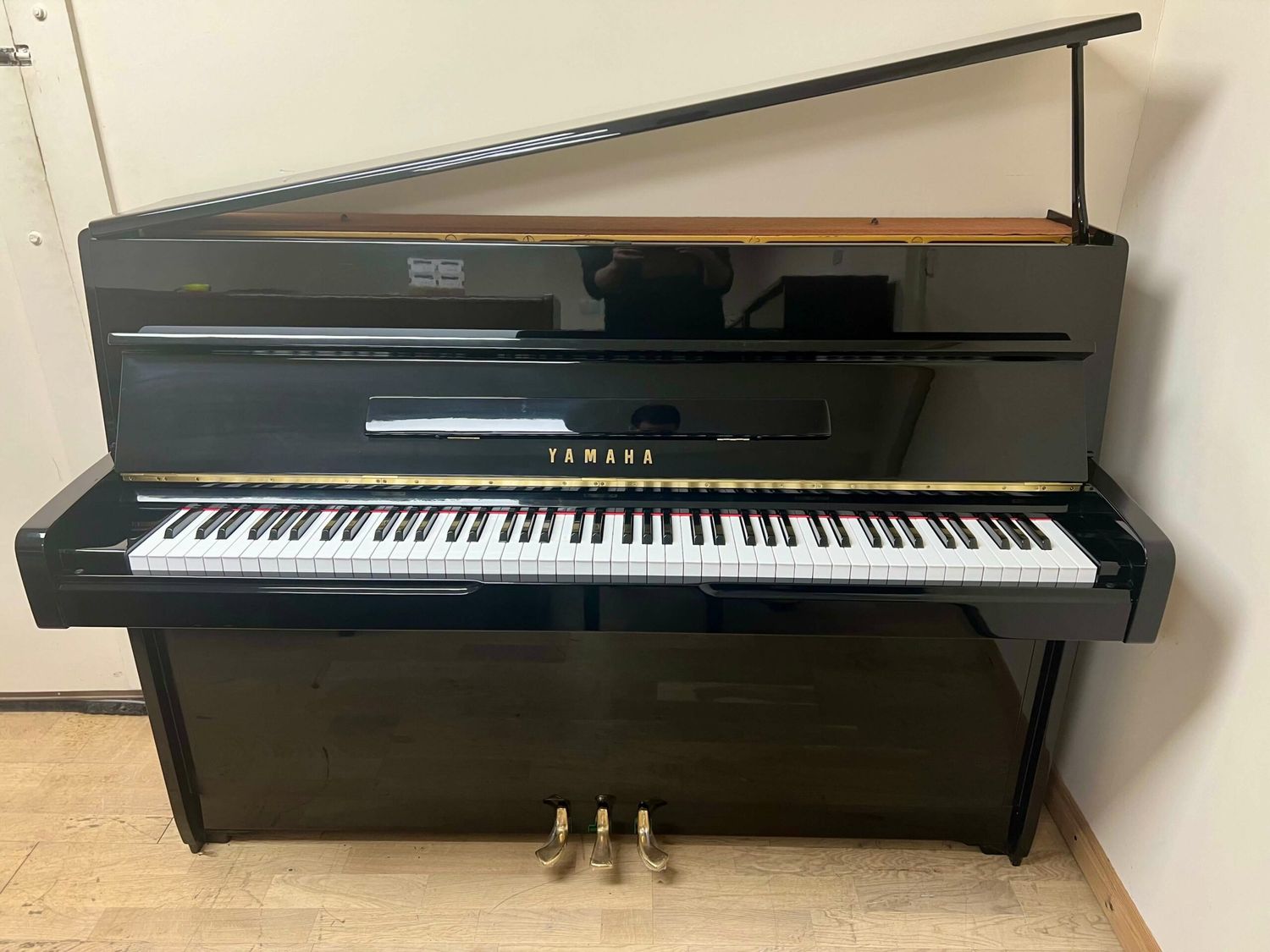

Piano
What Is An Acoustic Piano
Published: February 11, 2024
Discover the beauty of an acoustic piano and its timeless charm. Learn about the history, construction, and unique sound of the piano. Explore the world of pianos and find the perfect instrument for your musical journey.
(Many of the links in this article redirect to a specific reviewed product. Your purchase of these products through affiliate links helps to generate commission for AudioLover.com, at no extra cost. Learn more)
Table of Contents
Introduction
The acoustic piano is a timeless musical instrument that has captured the hearts of music enthusiasts for centuries. With its rich, resonant tones and expressive capabilities, the acoustic piano holds a revered place in the world of music. Whether you're a seasoned pianist or a curious beginner, understanding the essence of an acoustic piano is a journey into the artistry and craftsmanship that defines this instrument.
The allure of the acoustic piano lies in its ability to convey a wide range of emotions, from the gentle melancholy of a nocturne to the thundering power of a concerto. Unlike its digital counterpart, the acoustic piano possesses a distinct character, responding to the touch of the player with warmth and nuance.
Steeped in history and tradition, the acoustic piano stands as a symbol of musical excellence and a cornerstone of classical and contemporary compositions. As we embark on an exploration of the acoustic piano, we'll delve into its captivating history, intricate anatomy, and the enchanting process through which it produces its signature sound. Additionally, we'll uncover the various types of acoustic pianos, the benefits of playing them, and essential maintenance practices to preserve their grandeur.
Join us on this melodic odyssey as we unravel the captivating world of the acoustic piano, where craftsmanship, artistry, and musical expression converge in perfect harmony.
History of the Acoustic Piano
The history of the acoustic piano is a tale woven with innovation, creativity, and the pursuit of musical perfection. Its origins can be traced back to the early 18th century when Bartolomeo Cristofori, an Italian harpsichord maker, set out to create an instrument with the ability to produce both soft and loud notes through a keyboard mechanism. This groundbreaking invention marked the birth of the piano as we know it today.
Cristofori’s early pianos, known as “gravicembalo col piano e forte,” meaning “harpsichord with soft and loud,” introduced a mechanism that allowed hammers to strike the strings, producing varying dynamics based on the force applied to the keys. This pivotal development laid the foundation for the modern piano’s dynamic range and expressive capabilities.
Throughout the 18th and 19th centuries, renowned piano makers such as Steinway & Sons, Bechstein, and Bosendorfer refined the instrument, enhancing its tonal quality, keyboard responsiveness, and structural integrity. The piano’s popularity soared during the Romantic era, becoming the centerpiece of musical compositions by virtuosos like Frederic Chopin, Franz Liszt, and Clara Schumann.
By the 20th century, the piano had evolved into a symbol of cultural refinement and musical sophistication, gracing concert halls, salons, and homes around the world. Its influence permeated diverse genres, from classical and jazz to pop and rock, making it a versatile and beloved instrument for musicians of all backgrounds.
Today, the acoustic piano continues to enchant and inspire players and audiences alike, preserving its legacy as a paragon of musical ingenuity. Its enduring presence in the ever-changing landscape of music attests to the timeless allure and irreplaceable artistry of this remarkable instrument.
Anatomy of an Acoustic Piano
Understanding the anatomy of an acoustic piano unveils the intricate craftsmanship and engineering that culminate in its mesmerizing sound production. At first glance, the piano’s exterior presents a majestic and elegant facade, while its internal components harbor a symphony of precision and artistry.
The piano’s cabinet, or case, serves as the instrument’s outer shell, providing structural support and aesthetic appeal. Crafted from a variety of woods, including spruce, maple, and mahogany, the cabinet contributes to the piano’s resonance and visual allure. The lid, which can be raised or lowered, allows for tonal adjustments and projection control.
Beneath the lid lies the piano’s soundboard, a vital component responsible for amplifying the vibrations of the strings. Constructed from spruce, the soundboard functions as a resonating amplifier, enriching the piano’s tonal depth and projection. Adjacent to the soundboard, the cast iron plate withstands the immense tension exerted by the strings, ensuring structural integrity and optimal string vibration.
The keyboard, comprising 88 keys in modern pianos, serves as the interface through which the player communicates with the instrument. Each key is meticulously weighted and balanced to provide a responsive and nuanced touch, enabling the pianist to convey a wide spectrum of emotions and dynamics.
Beneath the keys, the action mechanism orchestrates the intricate dance of hammers, dampers, and escapements, translating the pianist’s keystrokes into melodic resonance. The hammers, covered in dense felt, strike the strings upon key depression, eliciting the piano’s characteristic timbre and tonal expression.
Delving deeper into the piano’s interior reveals the array of strings, meticulously tuned and arranged to produce a vast range of pitches and harmonies. The bass strings, wound with copper wire, yield deep, sonorous tones, while the treble strings, composed of high-tensile steel, deliver crystalline clarity and brilliance.
As we unravel the anatomy of the acoustic piano, we gain a profound appreciation for the meticulous craftsmanship and engineering ingenuity that converge to create an instrument of unparalleled beauty and sonic splendor.
How an Acoustic Piano Produces Sound
The mesmerizing sound produced by an acoustic piano is a result of a complex interplay of mechanical and acoustic phenomena, culminating in a symphony of vibrations and harmonics. As the pianist’s fingers grace the keyboard, a cascade of events unfolds within the instrument, giving rise to the rich and resonant tones that define the piano’s allure.
When a key is depressed, the piano’s action mechanism sets into motion, propelling a felt-covered hammer to strike the corresponding string. This impact induces the string to vibrate, generating intricate waves of sound that reverberate throughout the instrument.
The strings’ vibrations are transmitted to the soundboard, a vital component nestled beneath the piano’s strings. Crafted from resonant spruce wood, the soundboard acts as an amplifier, magnifying the strings’ vibrations and imbuing the resulting sound with warmth, depth, and projection.
The piano’s cabinet, comprising the lid, sides, and back, plays a crucial role in shaping the instrument’s acoustic properties. As the soundboard’s resonant energy permeates the cabinet, it undergoes a process of reflection and dispersion, enriching the sound with reverberant nuances and spatial presence.
Furthermore, the interaction between the vibrating strings and the surrounding air generates complex harmonics and overtones, contributing to the piano’s distinctive timbre and tonal complexity. This phenomenon imbues each note with a multifaceted sonic character, enriching the musical experience with depth and texture.
As the pianist navigates the keyboard, varying touch and dynamics, the piano responds with a kaleidoscope of tonal nuances, from delicate pianissimos to thundering fortissimos. This expressive range is made possible by the piano’s intricate action mechanism, which translates the subtleties of the player’s touch into a diverse palette of musical expression.
The enchanting process through which an acoustic piano produces sound is a testament to the instrument’s remarkable fusion of artistry and engineering. It is a symphonic dialogue between the pianist and the instrument, yielding a boundless realm of musical possibilities and emotional resonance.
Types of Acoustic Pianos
Acoustic pianos encompass a diverse array of styles and configurations, each imbued with unique tonal characteristics and design elements. Understanding the various types of acoustic pianos unveils a rich tapestry of musical possibilities, catering to the preferences and artistic inclinations of pianists across the globe.
Grand Pianos: Revered for their majestic presence and unparalleled tonal depth, grand pianos stand as the epitome of acoustic grandeur. They are characterized by their horizontal frame and strings, which extend horizontally, allowing for longer strings and enhanced resonance. Grand pianos are further classified based on size, ranging from the diminutive baby grand to the concert grand, each offering distinctive tonal qualities and performance capabilities.
Upright Pianos: Compact yet resoundingly expressive, upright pianos, also known as vertical pianos, are revered for their space-efficient design and versatile musicality. Their vertically arranged strings and compact frame make them an ideal choice for home practice and intimate performances. Upright pianos are available in various sizes, from spinet and console pianos to studio and upright grand pianos, catering to diverse spatial and tonal preferences.
Digital Hybrid Pianos: Blending the timeless allure of acoustic pianos with modern technological innovations, digital hybrid pianos offer a versatile and dynamic playing experience. These instruments feature traditional acoustic piano actions and strings, augmented with digital sound enhancement and recording capabilities. Digital hybrid pianos provide the flexibility of silent practice, integrated sound libraries, and connectivity options, appealing to musicians seeking a harmonious fusion of tradition and innovation.
Art Case Pianos: Celebrating the marriage of musical craftsmanship and visual artistry, art case pianos exemplify the pinnacle of aesthetic opulence. Adorned with exquisite embellishments, handcrafted details, and ornate designs, these pianos serve as captivating artistic statements. Art case pianos are cherished for their ornamental value and are often custom-built to reflect the discerning tastes and artistic visions of their owners.
As pianists explore the diverse landscape of acoustic pianos, they encounter a spectrum of tonal palettes, design aesthetics, and performance attributes, each contributing to the rich tapestry of musical expression and artistic inspiration.
Benefits of Playing an Acoustic Piano
Engaging with an acoustic piano yields an array of profound benefits that extend beyond musical proficiency, enriching the mind, body, and spirit. Whether embarking on a musical journey as a novice or honing advanced skills, the acoustic piano offers a transformative experience that nurtures holistic well-being and artistic fulfillment.
Expressive Range: The acoustic piano’s responsive keyboard and dynamic tonal spectrum empower musicians to explore a vast landscape of musical expression. From delicate pianissimos to thundering fortissimos, the piano’s nuanced touch fosters a deep connection between the player and the instrument, nurturing emotional sensitivity and artistic refinement.
Cognitive Enhancement: Playing the acoustic piano engages cognitive faculties such as memory, attention, and spatial-temporal skills, contributing to enhanced cognitive function and mental acuity. The intricate coordination required to navigate the keyboard and interpret musical notation stimulates neural pathways, fostering cognitive dexterity and creative thinking.
Emotional Resonance: The act of playing an acoustic piano provides a cathartic outlet for emotional expression, offering solace, inspiration, and a means of processing complex feelings. The piano’s evocative timbre and expressive capabilities enable musicians to convey and experience a wide spectrum of emotions, fostering emotional intelligence and introspective growth.
Physical Dexterity: Mastery of the piano necessitates refined motor skills, finger dexterity, and hand-eye coordination, promoting physical agility and fine motor control. The repetitive yet intricate movements involved in piano playing contribute to muscular strength, flexibility, and overall physical coordination.
Stress Reduction: Immersion in the melodic embrace of an acoustic piano serves as a therapeutic respite from the demands of daily life, offering a sanctuary for relaxation, mindfulness, and stress reduction. The act of creating music fosters a sense of tranquility and emotional equilibrium, serving as a meditative practice for mental and emotional well-being.
Social Connection: The acoustic piano serves as a conduit for communal engagement, fostering connections with fellow musicians, audiences, and musical communities. Collaborative performances, ensemble playing, and shared appreciation for the piano’s repertoire cultivate a sense of camaraderie and shared artistic endeavor.
Embracing the art of playing an acoustic piano transcends musical proficiency, nurturing a profound tapestry of cognitive, emotional, and physical well-being. It is a transformative journey that unfolds through the harmonious convergence of artistry, expression, and personal growth.
Maintenance and Care for Acoustic Pianos
Preserving the splendor and functionality of an acoustic piano entails dedicated maintenance and attentive care, ensuring its longevity and optimal performance. By adhering to essential upkeep practices, pianists and piano owners can safeguard their instrument’s tonal integrity and structural resilience, fostering a harmonious and enduring musical partnership.
Regulated Climate: Maintaining a stable and moderate environment is paramount for the well-being of an acoustic piano. Fluctuations in temperature and humidity can adversely impact the instrument’s wooden components, leading to warping, tuning instability, and structural damage. Placing the piano away from direct sunlight, heating vents, and damp areas helps preserve its integrity.
Regular Tuning: Scheduled tuning sessions by a qualified piano technician are essential for upholding the piano’s pitch and tonal precision. The strings’ tension and the instrument’s wooden components are sensitive to environmental changes, necessitating periodic tuning to ensure harmonic balance and tonal accuracy.
Keyboard and Action Maintenance: Keeping the piano’s keyboard and action mechanism free of dust, debris, and moisture is crucial for sustaining responsive touch and precise functionality. Gentle cleaning with a soft cloth and periodic action regulation by a skilled technician optimize the piano’s playability and tactile responsiveness.
String and Soundboard Care: Regular inspection of the strings and soundboard for signs of wear, corrosion, or structural issues is imperative for preserving the instrument’s tonal resonance and vibrational integrity. Addressing string corrosion, soundboard cracks, and structural anomalies in a timely manner mitigates potential tonal degradation and structural compromise.
Voicing and Regulation: Periodic voicing and regulation adjustments by a qualified technician optimize the piano’s tonal character and dynamic responsiveness. Voicing addresses the hammers’ felt density and tonal clarity, while regulation ensures consistent touch and uniformity across the keyboard, enhancing the instrument’s expressive range and playability.
Professional Inspection and Maintenance: Engaging the services of a reputable piano technician for comprehensive inspections, maintenance, and repairs is instrumental in safeguarding the piano’s long-term health and performance. Skilled technicians possess the expertise to diagnose and address a spectrum of technical and tonal intricacies, preserving the instrument’s sonic splendor and mechanical precision.
By embracing meticulous maintenance and attentive care practices, pianists and piano enthusiasts uphold the legacy and artistry of the acoustic piano, nurturing a musical companion that resonates with timeless elegance and enduring allure.
Conclusion
The acoustic piano stands as a paragon of musical artistry, craftsmanship, and emotional resonance, weaving a melodic tapestry that transcends time and space. From its storied origins in the workshops of visionary artisans to its enduring presence in concert halls and homes worldwide, the acoustic piano embodies the essence of musical expression and human creativity.
As we traverse the captivating landscape of the acoustic piano, we unravel its rich history, intricate anatomy, and the enchanting process through which it produces its evocative sound. We explore the diverse types of acoustic pianos, each offering a unique tonal palette and design ethos, catering to the artistic aspirations of musicians across genres and generations.
Delving into the benefits of playing an acoustic piano reveals a transformative journey that nurtures cognitive acuity, emotional resonance, and physical well-being. The piano’s expressive range, cognitive stimulation, and therapeutic potential converge to forge a profound connection between the player, the instrument, and the boundless realm of musical expression.
Moreover, the conscientious maintenance and care practices outlined underscore the commitment to preserving the acoustic piano’s tonal integrity, structural resilience, and timeless allure. By embracing dedicated upkeep and professional attention, pianists and piano owners safeguard the instrument’s legacy and ensure its enduring presence as a beacon of musical inspiration.
As we bid adieu to this exploration of the acoustic piano, we are reminded of its enduring legacy as a vessel of artistic expression, emotional resonance, and cultural significance. It is a testament to human ingenuity and creative fervor, transcending mere craftsmanship to resonate as a timeless emblem of musical excellence and profound beauty.
May the resonant chords and expressive nuances of the acoustic piano continue to captivate hearts, inspire minds, and kindle the flames of musical passion for generations to come.

